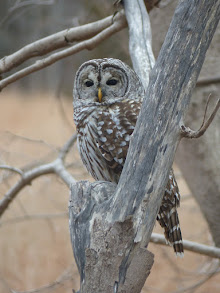McCay's work had its limitations. His dialogue is, for the most part, utterly lifeless, and displays none of the dazzling wordplay and pitch-perfect ear for the rich variety of American dialects displayed by his contemporary George Herriman, the brilliant creator of Krazy Kat. And there's no getting around the unfortunate racial stereotype represented by Nemo's sidekick Impie, who with his grass skirt, grunting gibberish, and apelike features actually predated Little Nemo, having first appeared, with his fellows, in McCay's early feature A Tale of the Jungle Imps. Some of the thematic material he worked into the strip -- the dragons, princesses, beasts, and savages -- was drawn from the stock situations and characters of adventure and fantasy stories, even if it's true that later creators (notably Walt Disney) would in their turn draw heavily on McCay for inspiration. Little Nemo debuted just a few years after the first Oz stories, and at its weakest it has some of the same preciousness without any of Baum's talent for spinning out a sustained and coherent narrative. But for imaginative daring, and above all for the originality and vitality of his artwork, McCay had few peers. At his best he leaves clichés and stereotypes behind and brings us into a world that is entirely his own.

The above strip is particularly interesting both for what it is and what it isn't. The surreal menace of buildings that sprout legs and chase the children is perhaps not completely unprecedented (one thinks of Baba Yaga and her house with chicken legs in Russian folklore), but it's unexpected and uncanny nonetheless, and the way McCay slowly draws us into an awareness of what is going on is masterful. But there's something noteworthy about the exterior scenes, which is that they don't show any indication of the cosmopolitan cityscape that, c. 1909, was sprouting up in Manhattan, Chicago, and other great metropolises. Street scenes like this still existed in every large city, of course, as they continue to do in sections of New York City (though the absence of parked cars tips us off that this is not 2009), but there's nothing in the lower eight panels that could not have been drawn, say, fifty years earlier.
But then there is this sequence; fleeing from a pair of red, bearded giants, Nemo and Impie, transformed into giants themselves, are, in a deft bit of visual sleight-of-hand, suddenly carried aloft. They race over farms and suburbs, finally coming to rest in the center of an ethereal city.

In the next panel, which again is brightly illuminated, a crowd gathers around the pair in the heart of what must have been a fairly realistic depiction of Manhattan in McCay's heyday, but as they scale the surrounding buildings and make their way to the harbor one tall structure after another sprouts up, until they are surrounded by a dense forest of skyscrapers that stretches right to the water's edge.


The interesting thing is that the Manhattan skyline that these images suggest -- and surely Manhattan, where McCay worked, was the inspiration -- did not yet exist (and arguably still doesn't). New skyscrapers were being constructed at a rapid clip in various parts of the city, but the New York waterfront still retained a mix of low buildings and high rises. Here, for instance, from the New York Public Library's collections, is a photo of the North River (Hudson) piers, from 36th St. to 48th St., taken just months after McCay's drawing appeared:

We see a few large buildings relatively close to the harbor, but most of them are set well inland, and the immediate waterfront skyline is like a mouth with missing teeth. And only a few years before an Edison photographer had shot this moving picture footage of lower Manhattan, from Fulton Street to the Battery, recording the condition of the other portion of the island that was undergoing rapid modernization:
McCay, a superb draftsman, was perfectly capable of drawing realistic cityscapes. Here's a fine sequence of views of Chicago as Nemo and his companions approach it by airship.

And here, in a bird's eye view, is how Manhattan probably did appear, more or less, in the first decade of the 20th century -- bearing in mind that neither McCay nor likely anyone else would as yet have had the opportunity to actually view at from that angle.

Now it could be argued, and is doubtless true at least in part, that McCay was simple looking ahead and extrapolating when he drew the scene of Nemo and Impie emerging from the columns of towers. But I think it's at least equally true that he had no intention of drawing a literal city, either an existing one or one projected for the decades to come. Instead, he captured the psychological and social effects that the 20th-century city created, the sense of vastness, of totality, it provoked. We are no longer in the Dickensian warrens of the 19th-century metropolis. Seemingly self-created, looming out of all human scale, this new city is neither horrifying nor sheltering, but it will be an inescapable organizing and centering presence in the lives of all who live in it. It will be in cities like this -- not in aristocratic palaces or Rockwellian small towns -- that the course of the years that lay ahead will be determined. The century that he heralds, though McCay does not know it yet, will be a century of cities, of urban high-rises, subways, and expressways, of mass movements and mass production, of Stalinism and Fascism and the bombing of cities from the air, of Beirut and Grozny, and, just beyond its final cusp, of the fall of the Twin Towers.






